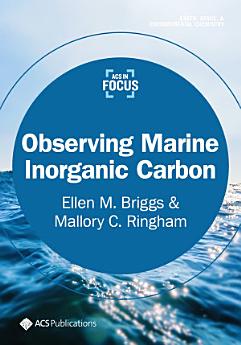Observing Marine Inorganic Carbon
eBook 정보
As new players come to the field from various industries and backgrounds, we often field questions about why we don’t yet have commercially available in situ sensors for more biogeochemical parameters. There are many challenges to working in marine environments regardless of what we are trying to measure, and producing quality data on the time and space scales required for carbon cycle work is a huge task. Many clever people have faced these challenges with fervor and creativity, and we look forward to exciting new developments in this field.
저자 정보
Ellen Briggs has been an Assistant Professor in the Ocean and Resources Engineering Department at the University of Hawaii at Manoa since 2020. She received a Ph.D. in Oceanography and an M.S. in Earth Science from the Scripps Institution of Oceanography in 2017 and 2014, respectively, and a B.S. in Chemistry from the University of Illinois at Urbana-Champaign in 2011. Her research involves the development of sensors for measuring the aqueous carbon dioxide system in seawater with a focus on an in situ pH and total alkalinity sensor. She has spent over 250 days at sea collecting seawater CO2 observations and deploying profiling floats and other instrumentation. Briggs enjoys every step of the way, from proof of concept to field deployment.
Mallory Ringham is an observational chemical oceanographer working on ocean carbon dioxide removal through electrochemical ocean alkalinity enhancement. She received a Ph.D. from the Joint Program in Chemical Oceanography from the Massachusetts Institute of Technology and Woods Hole Oceanographic Institution in 2022, following an M.S. in Earth Sciences and B.S. in Physics and Chemical Engineering at Syracuse University. She recently finished a postdoc at Stony Brook University on the SEA MATE project, and is now lead oceanographer for measurement, reporting, and verification of carbon dioxide removal at Ebb Carbon, Inc. Her research has involved inorganic ocean carbon sensor development (CHANOS II DIC), field observations in various coastal carbon cycling projects, and ocean alkalinity enhancement experiments.








